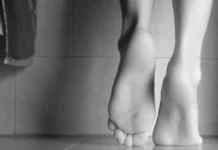Introduction
The Somatic Emotion Release Method (SEM) is a holistic approach that aims to release emotions stored in the body. Unlike other emotional treatment methods that focus primarily on speaking, the Somatic Emotion Release Method recognizes that emotions can be physically felt in the body and that bodywork techniques can be used to release them.
This method is based on the principle that repressed emotions can manifest themselves as muscle tension, body pain, or other physical sensations. By working with the body, Somatic Emotion Release Method practitioners help individuals identify and release these buried emotions, which can result in lasting relief from physical and emotional symptoms.
A key component of this method is body awareness. Practitioners help individuals develop a deep awareness of the physical sensations present in their body. This can be done through relaxation techniques, meditation or gentle body movements. By connecting with their body in this way, individuals can begin to identify areas where emotions are stored and explore the sensations associated with them.
Once emotions are located in the body, Somatic Emotion Release Method practitioners use a variety of techniques to release them. This may include breathing exercises, specific movements aimed at releasing muscle tension, or therapeutic touch techniques. The goal is to help individuals feel their emotions fully and let them flow through their bodies, rather than repressing or repressing them.
Another important component of this method is integration. After releasing emotions, it is essential to help individuals integrate this experience into their daily lives. This may involve discussing insights or realizations that emerged during the session, as well as suggestions for self-care practices to continue at home.
The Somatic Emotion Release Method can be beneficial for a variety of emotional and physical issues, including stress, anxiety, past trauma, and chronic pain. By working with the body holistically, this approach can help individuals regain emotional balance and improve their overall well-being.
Theoretical foundations of the Method of Liberation of Somatic Emotions
The Method of Somatic Emotion Liberation (MLES) is based on complex theoretical foundations that integrate both psychological and physiological concepts. Here is an analysis of the main theoretical foundations of this approach:
Mind-body theory
MLES is based on the principle that the body and mind are intimately linked, and that repressed emotions can manifest themselves in the form of muscular tension or physical sensations. According to this theory, unresolved emotional experiences can be stored in the body, thereby influencing physical and emotional well-being. By releasing these somatic emotions, we can promote healing on both a physical and psychological level.
Muscle memory
MLES also draws on the concept of muscle memory, which refers to the ability of muscles to remember tension and movement patterns associated with past emotional experiences. According to this perspective, muscular tensions can serve as anchor points for repressed emotions, and by releasing these tensions, one can access and process the underlying emotions.
Integration of body and mind
MLES seeks to integrate the body and mind into the healing process recognizing that emotional experiences can have a profound impact on the body and vice versa. Using techniques such as breathing, body movement and sensory awareness, this method aims to help individuals access and release their buried emotions in a safe and controlled manner.
Holistic approach
MLES takes a holistic approach to health by recognizing the interdependence between the physical, emotional and mental dimensions of the human being. Rather than treating symptoms in isolation, this method seeks to identify and treat the underlying causes of imbalances by promoting harmony between body and mind.
Neurobiology of emotions
MLES integrates knowledge from neurobiology to understand how emotions are processed and stored in the brain and nervous system. By understanding these neurobiological processes, MLES practitioners can adapt their techniques to help individuals regulate their emotions and process trauma.
Somatic psychology
This approach recognizes the connection between psychological processes and bodily sensations, highlighting how emotions can manifest through the body. By integrating somatic psychology, MLES offers tools to explore and release emotions that are stored in the body.
Relaxation and emotional regulation techniques
MLES uses relaxation and emotional regulation techniques such as deep breathing, meditation, and visualization to help individuals connect with their emotions consciously and process them adaptively.
Integrative therapeutic approaches
MLES can be combined with other integrative therapeutic approaches such as cognitive behavioral therapy, bodywork therapy, and mindfulness therapy to provide a holistic and comprehensive approach to emotional healing.
Experiential approach
Rather than focusing solely on the verbal analysis of emotions, MLES encourages an experiential approach that directly engages the body and physical sensations. By connecting with present sensory and emotional experiences, individuals can explore and transform their emotional patterns.
The link between emotions and the body
The connection between emotions and the body is deeply complex and interconnected. It is fundamental to understand how emotions are stored in the body and how this can affect overall health and well-being. Emotions are not simply abstract mental experiences; they are also felt and expressed through physiological and bodily reactions. Understanding this relationship allows us to better understand the impact of emotions on our physical and mental health, as well as to develop more holistic and integrative treatment approaches.
Generally speaking, emotions are complex responses to internal or external stimuli. When we experience emotions such as joy, sadness, anger or fear, our brain triggers a series of physiological and neurochemical responses that affect our entire body. These responses include changes in heart rate, breathing, muscle tension and the release of hormones such as cortisol and adrenaline.
A crucial aspect of this dynamic is how unexpressed or unresolved emotions are stored in the body. When emotions are not fully expressed or processed, they can be repressed and stored in different parts of the body. For example, feelings of pent-up anger may manifest as tension in the jaw, shoulders, or back. Likewise, unresolved fear experiences can lead to a feeling of tightness in the chest or abdominal pain.
This idea is often associated with the theory of muscle memory, which suggests that emotional experiences are stored in the muscles of the body. Muscle tension patterns associated with specific emotional experiences can be reactivated when similar situations recur, even years later. For example, a person who has experienced car accident trauma may experience anxiety or a sense of panic every time they get into a car, even long after the initial incident.
The accumulation of these unresolved emotional tensions can have a significant impact on overall health and well-being. On a physical level, chronic stress caused by the repression of emotions can contribute to the development of health problems such as cardiovascular disease, digestive disorders, musculoskeletal disorders and even weaken the immune system. Prolonged muscle tension can also lead to chronic pain, headaches and decreased mobility.
Emotionally and mentally, suppressing emotions can lead to mood disorders such as depression and anxiety, as well as relationship difficulties and low self-esteem. Repressed emotions can also disrupt sleep, appetite, and other physiological functions, contributing to a vicious cycle of emotional distress and physical dysfunction.
However, by recognizing and releasing these stored emotions, it is possible to promote healing and well-being. Approaches such as somatic therapy, meditation, yoga, artistic expression, and psychotherapy can help individuals access their repressed emotions and express them in healthy, adaptive ways. By releasing these emotions, physical tensions can be released, allowing the body to return to its natural balance and promoting better overall health.
Somatic therapy, for example, focuses on awareness and exploration of bodily sensations in order to identify and release stored emotions. Techniques such as myofascial release, mindful movement, and deep breathing are used to help individuals connect with their pent-up emotions and express them in a safe and controlled way.
Likewise, meditation and yoga are practices that promote bodily awareness and acceptance of emotions. By practicing mindfulness and focusing on breathing and movement, individuals can learn to observe their emotions without judgment and let them dissipate naturally.
Artistic expression can also be a powerful way to release pent-up emotions. Creating art, whether through drawing, painting, writing, or other forms of expression, allows individuals to explore and communicate their emotions in symbolic, nonverbal ways.
Finally, psychotherapy provides a safe space to explore emotions, thoughts, and behaviors in more depth. Therapies such as cognitive behavioral therapy, psychodynamic therapy, and emotion-focused therapy offer tools and techniques to help individuals understand and constructively process their emotions.
Emotional liberation techniques
The Somatic Emotion Release Method (SEM) uses a range of specific techniques to help individuals release pent-up emotions and restore harmony between body and mind. Here are some of the main techniques used in MLES:
Lists of emotional release techniques
- Conscious breathing: Conscious breathing is a fundamental technique in MLES. By focusing on breathing, individuals can connect with their body and calm their mind. Deep, slow breathing exercises are often used to induce a state of relaxation and presence, making it easier to access buried emotions.
- Body Movement: Body movement is another essential component of MLES. By encouraging individuals to move their bodies consciously and freely, this technique helps release muscular tension and unblock pent-up emotions. Movements can be gentle and flowing, such as yoga or tai chi, or more dynamic, such as expressive dance.
- Therapeutic Touch: Therapeutic touch is a powerful method for releasing emotions stored in the body. MLES practitioners may use gentle massage or soft tissue manipulation techniques to relax muscles and encourage the release of emotional tension. Therapeutic touch can also help strengthen the bond between practitioner and client, promoting a feeling of safety and support.
- Emotional Expression: Emotional expression is encouraged within the MLES. Individuals are encouraged to express their emotions in authentic, non-judgmental ways, whether through speaking, drawing, writing, or other forms of artistic expression. This technique allows individuals to give voice to their pent-up emotions and release them in a constructive way.
- Creative Visualization: Creative visualization is used in MLES to help individuals explore and transform their emotions. Practitioners often lead clients through guided visualizations where they imagine their body as an inner landscape, exploring the sensations and emotions that reside there. This technique can help dissolve emotional blockages and promote a feeling of liberation and well-being.
- Mindfulness and meditation: Mindfulness and meditation are key practices in MLES. By cultivating mindfulness, individuals can develop a heightened awareness of their bodily sensations and emotional states, which facilitates the process of emotional release. Guided meditation exercises are often used to help individuals relax and connect with their inner world.
- Internal dialogue: Internal dialogue is a technique used to explore and transform thought patterns and beliefs that underlie repressed emotions. Individuals are encouraged to engage with their various internal parts, identifying critical or self-sabotaging voices that may hinder the process of emotional release. This dialogue allows individuals to become aware of their automatic thoughts and replace them with more positive and constructive thoughts.
- Deep relaxation techniques: Deep relaxation techniques, such as progressive muscle relaxation, guided visualization, and biofeedback, are often integrated into MLES to help individuals deeply relax and release muscle tension. These techniques promote a state of calm and tranquility which facilitates the process of emotional release.
- Working with Meridians and Acupuncture Points: Some MLES practitioners incorporate traditional Chinese medicine techniques, such as acupressure and working with energy meridians, to help unblock pent-up emotions and restore harmony. energy balance of the body. By stimulating certain acupuncture points, it is possible to release emotional blockages and promote the circulation of vital energy in the body.
- Grounding Exercises: Grounding or grounding exercises are used in MLES to help individuals connect with their body and with present reality. These exercises often involve focusing on physical sensations in the body, such as the pressure of the feet on the ground or the warmth of the hands, which helps bring attention back to the present moment and calm the mind.
- Energy Release Techniques: Some MLES practitioners use energy release techniques, such as Reiki or chakra work, to help dissolve emotional blockages and restore the body’s energetic balance. These techniques often involve the transfer of energy through the practitioner’s hands to help unblock pent-up emotions and promote healing.
- Dreamwork: Dreamwork can be integrated into MLES to explore and process repressed emotions that manifest in the dream world. Individuals are encouraged to keep a dream journal and examine recurring themes or symbols that may indicate unresolved emotions. By working with dreams, it is possible to better understand and release the emotions hidden in the unconscious.
- Creative Expression Techniques: Creative expression, such as art therapy, expressive dance, or music, can be used in MLES to help individuals express their emotions nonverbally. These techniques offer a safe, non-threatening way to release pent-up emotions and express them authentically and creatively.
- Working with Crystals and Gemstones: Some MLES practitioners incorporate the use of crystals and gemstones into their practice to help balance the body’s energy centers (chakras) and facilitate the release of blocked emotions. Each crystal is associated with specific energetic properties, and by placing them on or around the body it is possible to facilitate the flow of energy and promote emotional healing.
- Sound and vibration bath: Sound and vibration baths involve the use of specific sounds and vibrations, such as those produced by Tibetan bowls, tuning forks or drums, to induce a state of deep relaxation and promote relaxation. release of repressed emotions. These techniques are often used in group or individual sessions to help participants connect with their bodies and release emotional tension.
- Spontaneous Movement Therapy: Spontaneous movement therapy encourages individuals to explore and express their emotions through free, spontaneous body movement. MLES practitioners can guide individuals through exercises in improvisational dance, expressive gestures, or sensory movement to help release pent-up emotions and restore fluidity of body movement.
- Integrative Bodywork: Integrative bodywork combines different emotional liberation approaches, such as somatic psychotherapy, craniosacral therapy, and postural rehabilitation, to help individuals integrate their emotional experiences into their body and psyche. These approaches aim to address emotional tensions and behavioral patterns at a deeply rooted level, thereby promoting overall healing.
- Exploration of the natural environment: Exploration of the natural environment can be used in MLES to help individuals reconnect with their bodies and the surrounding nature. Activities such as mindful walking, forest bathing (shinrin-yoku), and grounding ceremonies are used to help individuals feel grounded and in harmony with their surroundings, which promotes the release of repressed emotions.
- Use of mental imagery and metaphors: The use of mental imagery and metaphors is another technique used in MLES to help individuals explore and transform their emotions. Practitioners can guide individuals through guided imagery exercises where they use symbolic images to represent their repressed emotions, which facilitates the process of emotional release and healing.
- Nervous system regulation techniques: Nervous system regulation techniques, such as neurosensory therapy, polyvagal therapy, and cardiac coherence, are used in MLES to help individuals regulate their stress response and promote a state of calm and presence. These techniques aim to restore balance to the autonomic nervous system, which facilitates the process of emotional release and regeneration of the body.
Clinical applications of the Somatic Emotion Liberation Method
The Somatic Emotion Liberation Method (SEM) provides an effective therapeutic framework for addressing a variety of health issues, particularly those related to stress, anxiety, trauma, and chronic pain. Here is a review of how MLES is used in treating these health conditions:
List of clinical applications
- Stress management: Chronic stress can have a significant impact on mental and physical health. MLES offers techniques such as mindful breathing, body movement, and deep relaxation to help individuals reduce stress and restore emotional balance. By releasing pent-up emotions that contribute to stress, MLES allows individuals to develop effective strategies to deal with the challenges of daily life.
- Treatment of Anxiety: Anxiety is a common disorder that can cause significant emotional distress and interfere with daily functioning. MLES offers tools to help individuals regulate their anxiety and feel calmer and more centered. Breathing, meditation and grounding techniques are particularly helpful in reducing symptoms of anxiety and promoting a state of deep relaxation.
- Healing Trauma: Past trauma can leave deep imprints on the body and mind, leading to symptoms such as hypervigilance, flashbacks, and nightmares. MLES offers integrative therapeutic approaches to help individuals process trauma and heal emotional wounds. Using techniques such as body movement, therapeutic touch, and spontaneous movement therapy, MLES allows individuals to safely revisit traumatic experiences and release the emotions associated with them.
- Chronic Pain Relief: Chronic pain is often associated with muscular tension and emotional imbalances. MLES offers therapeutic approaches that target both the physical and emotional aspects of pain. Deep relaxation techniques, working with energy meridians, and touch therapy can help relieve muscle tension and reduce the perception of pain. By releasing repressed emotions that contribute to pain, MLES allows individuals to regain better physical functioning and a better quality of life.
- Improved overall well-being: In addition to treating specific health concerns, MLES aims to promote overall well-being by promoting harmony between body and mind. By helping individuals release pent-up emotions and restore emotional balance, MLES helps improve quality of life and promote better overall physical, mental and emotional health.
- Anger management: Pent-up anger can lead to muscular tension and emotional imbalances, which can negatively impact mental and physical health. MLES offers emotional freedom techniques that allow individuals to explore and transform their anger in constructive ways. By releasing pent-up emotions associated with anger, MLES allows individuals to develop healthy strategies to manage their emotion and avoid destructive behaviors.
- Improved self-confidence: Repressed emotions can often be linked to past experiences of rejection, criticism or neglect, which can affect self-confidence and self-esteem. MLES offers therapeutic techniques that allow individuals to release limiting beliefs and negative thought patterns that hinder their self-confidence. By exploring and transforming these repressed emotions, MLES promotes the development of positive self-esteem and increased self-confidence.
- Treatment of Somatoform Disorders: Somatoform disorders, such as painful somatoform disorder, are characterized by physical symptoms that do not have an obvious medical cause. These symptoms can often be linked to pent-up emotional tension. MLES offers therapeutic approaches that allow individuals to explore and release the emotions underlying their physical symptoms. By identifying and treating repressed emotions, MLES can help reduce the intensity of somatic symptoms and improve overall functioning.
- Grief support: Grief is an emotionally complex process that can be accompanied by physical tension and emotional pain. MLES provides therapeutic support to grieving individuals by allowing them to explore and release pent-up emotions associated with the loss of a loved one. By providing a safe space to express grief and pain, MLES allows individuals to move through the grieving process in a gentler and more constructive way.
- Strengthening Interpersonal Relationships: Repressed emotions can often interfere with interpersonal relationships by creating destructive behavior patterns such as avoidance, manipulation, or passive aggressiveness. MLES offers therapeutic approaches that allow individuals to explore and transform their dysfunctional relational patterns. By releasing the pent-up emotions that underlie these patterns, MLES promotes more authentic, more satisfying, and more enriching relationships.
- Exploring underlying emotions: Eating disorders are often linked to repressed emotions such as sadness, anger, shame or anxiety. MLES allows individuals to explore and understand the emotions that trigger their dysfunctional eating behaviors. By releasing these pent-up emotions, MLES allows individuals to develop healthier strategies for coping with their emotions without resorting to disordered eating behaviors.
- Rehabilitation of the relationship with food: MLES offers therapeutic approaches that help individuals rebuild a healthy and balanced relationship with food. By identifying and releasing repressed emotions that have contributed to eating disorders, MLES allows individuals to rediscover a more intuitive and nourishing relationship with food. Mindfulness and dietary reeducation techniques are often used to help individuals recognize and meet their nutritional needs in an adaptive manner.
- Healing Underlying Emotional Wounds: Eating disorders can often be linked to underlying emotional wounds, such as experiences of trauma, neglect, or abuse. MLES offers therapeutic approaches that allow individuals to heal these deep emotional wounds. By providing a safe space to explore and express pent-up emotions, MLES allows individuals to release the self-destructive behavior patterns that underlie eating disorders.
- Strengthening self-esteem and body image: Eating disorders can lead to low self-esteem and negative body image. MLES offers therapeutic approaches that allow individuals to strengthen their self-esteem and develop a more positive body image. By identifying and releasing pent-up emotions that contribute to emotional distress, MLES allows individuals to develop a more loving and compassionate relationship with themselves and their bodies.
Integration of the Somatic Emotions Liberation Method into osteopathic practice
Integrating the Method of Somatic Emotion Liberation (MLES) into osteopathic practice provides a holistic and comprehensive approach to treating patients. Osteopaths can use MLES to complement traditional osteopathic techniques by addressing emotional and psychological aspects that may contribute to patients’ physical symptoms. Here are some clear ways osteopaths can integrate MLES into their practice:
List of integrations
- Holistic Assessment: During the initial assessment of the patient, osteopaths may consider not only the physical aspects of health, but also the emotional and psychological aspects. They may ask about stress, anxiety, past trauma, and other emotional factors that might influence the patient’s overall health. This holistic approach allows osteopaths to better understand the individual needs of each patient and develop a personalized treatment plan.
- Use of therapeutic touch: Osteopaths are trained to use therapeutic touch to assess and treat muscle tension, joint restrictions and postural imbalances. By integrating MLES, osteopaths can also use therapeutic touch to help release pent-up emotions that may be stored in the body’s tissues. By applying gentle massage and soft tissue manipulation techniques, osteopaths can help patients release emotional tension and restore emotional and physical balance.
- Integrating breathing and relaxation: Osteopaths can integrate mindful breathing and relaxation techniques into their practice to help patients relax and connect with their body. By encouraging patients to breathe deeply and focus on their bodily feelings, osteopaths can facilitate the release of pent-up emotions and promote a state of calm and presence. These techniques can be used before, during or after osteopathic manipulations to optimize treatment results.
- Encouraging emotional expression: Osteopaths can create a safe and welcoming environment where patients feel free to express their emotions. By encouraging patients to share their concerns, fears and anxieties, osteopaths can help release pent-up emotions that may contribute to physical symptoms. This patient-centered approach allows osteopaths to develop a relationship of trust with their patients and facilitate the healing process.
- Continuing education and collaboration: To effectively integrate MLES into their practice, osteopaths can pursue continuing education in emotional and psychological therapy. They may also collaborate with other mental health professionals, such as psychologists or therapists specializing in emotional release, to provide comprehensive, integrated care for their patients. By working collaboratively, osteopaths can help patients address the physical, emotional and psychological aspects of their health holistically.
- Personalized Treatment Sessions: Osteopaths can offer special sessions where they focus primarily on emotional release using MLES techniques. These sessions can be tailored to the specific needs of each patient and may include approaches such as therapeutic touch, mindful breathing, guided visualization and emotional expression.
- Integrated emotional release techniques: During these sessions, osteopaths can use emotional release techniques integrated into their traditional osteopathic practice. For example, during spinal manipulation, the osteopath may encourage the patient to focus on their breathing and release any emotional tension associated with the region being manipulated. This allows for a holistic approach to treatment, taking into account both the physical and emotional aspects of the patient’s health.
- Education and Emotional Coaching: Osteopaths can also provide their patients with tools and techniques that they can use outside of sessions to support their own emotional liberation process. This may include advice on stress management, mindfulness practice, muscle relaxation, and other emotional self-care strategies.
- Interdisciplinary Collaboration: Osteopaths may collaborate with other mental health professionals, such as psychologists, emotional release therapists, or integrative medicine practitioners, to provide comprehensive, integrated care to their patients. This collaborative approach combines the skills and knowledge of different professionals to meet the complex needs of patients.
Case studies and testimonials
Here are some case studies and testimonials illustrating the effectiveness of the Somatic Emotion Liberation Method (MLES):
- Case Study: Chronic Pain Relief Sophie, aged 45, had suffered from chronic back and shoulder pain for years. Despite several conventional treatments, his pain persisted. She began working with an MLES practitioner who incorporated emotional freedom techniques into her treatment plan. Over the course of the sessions, Sophie began to release the repressed emotions linked to her chronic stress and past trauma. At the same time, his physical pain gradually diminished. After a few months of working with MLES, Sophie reported a significant improvement in her pain and an overall better quality of life.
- Testimonial: Managing anxiety Pierre, 35, has struggled with anxiety and panic since his adolescence. He tried various therapeutic approaches without lasting success. After discovering MLES, Pierre began working with a therapist who integrated emotional release techniques into his sessions. Thanks to MLES, Pierre learned to identify and release the repressed emotions that fueled his anxiety. He also learned stress management tools and conscious breathing to regulate his emotions on a daily basis. Over time, Pierre saw a significant reduction in his anxiety symptoms and an improvement in his emotional well-being.
- Case Study: Healing Trauma Lisa, 28, was the victim of a traumatic car accident that left deep emotional scars. She suffered from nightmares, flashbacks and hypervigilance, which significantly affected her quality of life. Lisa began working with an MLES practitioner who offered her a safe space to explore and release her pent-up emotions related to the accident. Through breathing techniques, body movement and guided visualization, Lisa was able to gradually heal her emotional wounds. After several months of working with MLES, Lisa reported a significant reduction in her traumatic symptoms and a boost in her self-confidence.
These examples highlight the ability of the Somatic Emotion Release Method to help individuals overcome a variety of emotional and physical health issues by releasing pent-up emotions and promoting holistic healing. Case studies and personal testimonials provide concrete evidence of the effectiveness of MLES in people’s lives.
Conclusion
In conclusion, the Somatic Emotion Liberation Method (SEM) offers a holistic and integrative approach to addressing emotional and physical health issues by releasing pent-up emotions that are stored in the body. By integrating techniques of breathing, body movement, therapeutic touch and emotional exploration, MLES allows individuals to regain emotional and physical balance and promote holistic healing.
This method has varied clinical applications, ranging from stress and anxiety management to healing trauma and chronic pain. It can be integrated into various therapeutic practices, including osteopathy, somatic psychotherapy, bodywork therapy and integrative medicine, to provide comprehensive and personalized care to patients.
Although there is no specific training or certification program for MLES, practitioners can gain skills in this area by completing training and certifications in related fields and participating in workshops and training events. professional development.
By integrating the Somatic Emotion Release Method into their practice, healthcare professionals can provide holistic care that addresses both the physical and emotional aspects of their patients’ health, thereby promoting overall well-being and lasting healing.





















